by Lisa Cooke | Nov 15, 2016 | 01 What's New, Native American
Today is the last day that the Native American records collections is available for free on Fold3.com. Many American families have a tradition of Native American ancestry. Here are some helpful tips when researching the Guion Miller Roll at Fold3.com.

Pub. by Standard Souvenirs & Novelties, Inc., Knoxville, TN. Courtesy of Boston Public Library via Flickr.com.
Purpose of the Guion Miller Roll
In our most recent post, “Eastern Cherokee Applications for Native American Research,” we shared how to find and use the Eastern Cherokee Applications at Fold3.com. Today’s post is on the Guion Miller Roll. It is a list of those who were eligible after having filled out the Eastern Cherokee Application. These eligible persons were made into a list and that list, or roll, is called the Guion Miller Roll.
Looking to see if your ancestor is found on the Guion Miller Roll is important because information on this roll is later than the information in the Dawes Rolls. New information (like names of additional family members) in the Guion Miller Roll may not have been on the Dawes Rolls. Additionally, not finding a targeted ancestor listed with their family on the later Guion Miller Roll could also narrow down a date of death.
Fold3.com has the Guion Miller Roll online and has titled it Guion Miller Roll. Ancestry.com also has this list, but at Ancestry it is called U.S., Records Related to Enrollment of Eastern Cherokee by Guion Miller, 1908-1910.
Insights into the Guion Miller Roll Publication
Take a look at the titles under the publication of Guion Miller Roll at Fold3.com.
If you are not a member of Fold3.com, you will first need to go to www.fold3.com. Click in the center of the homepage where it says Free Access to Native American Records. Next, on the left you will see Records from Archives. Go ahead and click that.
From the list now showing on your screen, choose Guion Miller Roll.

Scroll to the bottom and click Learn more at the bottom right. You will be directed to a new screen. At this new screen, click Browse by title, over to the right.

You are directed to the publication titled Guion Miller Roll, and there is a list of five categories.
Let’s take a look at the list:
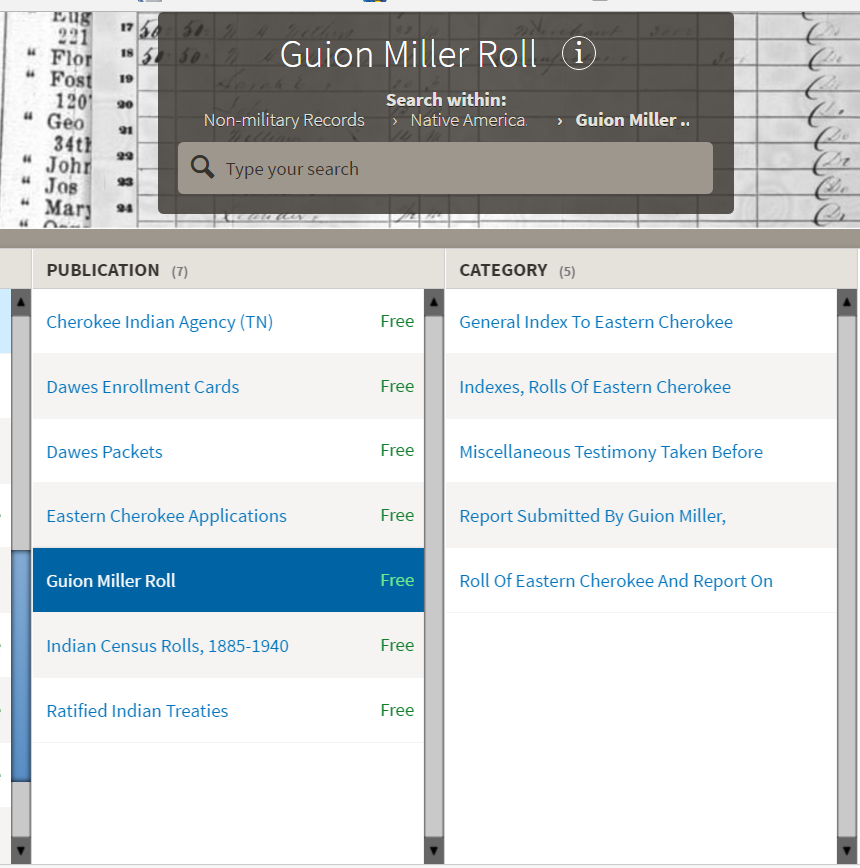
The categories under the Guion Miller Roll publication are:
- General Index to Eastern Cherokee
- Indexes, Rolls of Eastern Cherokee
- Miscellaneous Testimony Taken Before
- Report Submitted by Guion Miller
- Roll of Eastern Cherokee and Report On
Some of these publication titles are duplicates of other publication titles on Fold3. See this helpful image below:
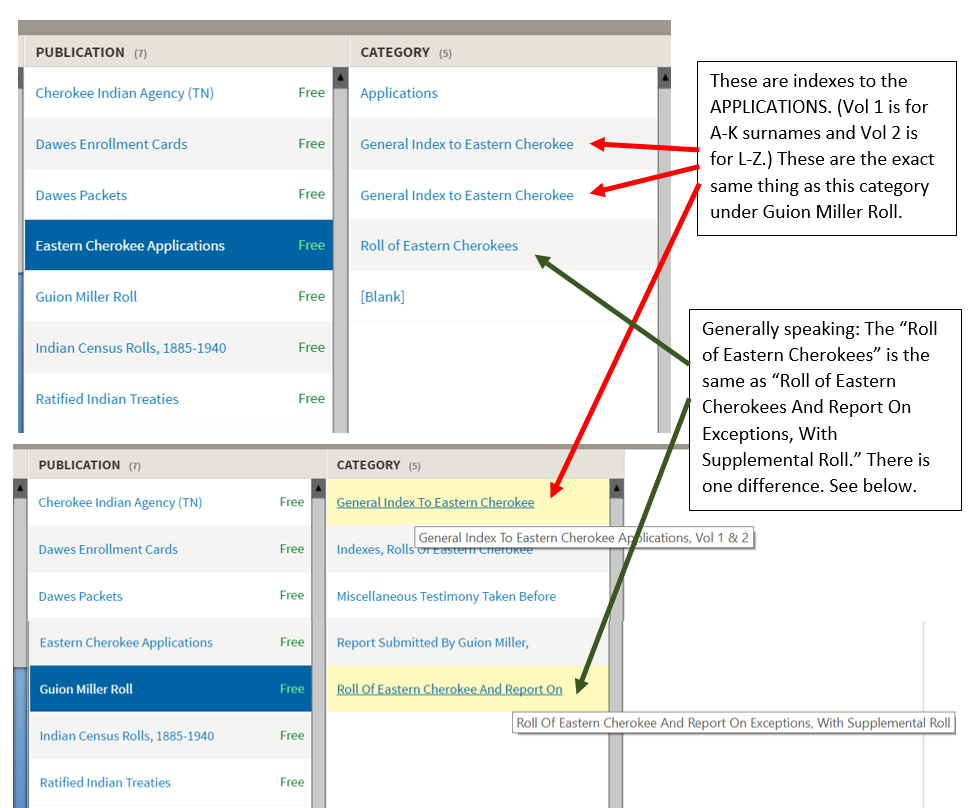
Duplicates can actually be beneficial. As an example, in the last title called the Roll of Eastern Cherokee And Report on Exceptions, With Supplemental Roll (the title has been shortened on your screen, but that is the full name) there is something you may not have realized. This title is the same thing as the title Roll of Eastern Cherokees in the Eastern Cherokee Applications publication. Why would Fold3 have two of the same thing? There is one exception between these two nearly buy prescription medication online uk identical groups of records. The exception is: Eastern Cherokee Applications>Roll of Eastern Cherokees indicated in the top part of the image, has the roll numbers cut off in some of their digital images. In other words, if you had only looked at that one and not the Roll of Eastern Cherokee and Report on Exceptions, With Supplemental Roll under the Guion Miller publication, you would have missed that.
From time to time, a digital copy will be made of a record set that ends up being too dark, too blurry, or too crooked. When this happens, some of the information on the record will be cut off or simply not readable. It’s great when there is a second set of digital images because hopefully the second copy will not have these problems. As in all things, if there is ever more than one copy of something, check them both! You never know how they may differ in quality of copy.
Miscellaneous Testimony Taken Before
This title, Miscellaneous Testimony Taken Before, under the publication of Guion Miller Roll is filled with hints and clues for your genealogy story. I think it has been my most important find in the Guion Miller Roll publication.

Testimony relating to the Guion Miller Roll.
The testimonies are broken up into ten volumes. Within these volumes are short (or long) testimonies from the applicant, friends, family, or acquaintances regarding their belief that someone was or was not of Indian descent. Many of the testimonies include names and dates of vital events, as well as residences. Even though we must take these records with a grain of salt because individuals may have had something to gain financially, the information would be considered valuable clues. Each testimony indicates which application it attached to.
How to Find a Testimony Record Related to an Eastern Cherokee Application
There is no index by name for testimony volumes 1-9 at Fold3, so you would have to go volume-by-volume, then page-by-page to find your ancestor. That would take a very long time! But if you go to Ancestry.com to U.S., Records Related to Enrollment of Eastern Cherokee by Guion Miller, 1908-1910, you can search by name and you will find the image of the testimony there.
[Note: Volume 10 is broken down into three subcategories. These are Creek Testimony which includes an index on the fourth page of the roll, Poindexter Testimony with no index, and Sizemore Testimony, also with no index. The Poindexter testimonies and the Sizemore testimonies are those testimonies claiming their Native American heritage through those surnames.]
More on Native American Research
Using Native American collections for genealogy research can be challenging. We hope this has helped you to better understand the ins and outs for using the record collections at Fold3. For even more helpful tips, read:
Disclosure: This article contains affiliate links and Genealogy Gems will be compensated if you make a purchase after clicking on these links (at no additional cost to you). Thank you for supporting Genealogy Gems!
by Lisa Cooke | Nov 7, 2016 | 01 What's New, Native American |
Many American families have a tradition of Native American ancestry. Now, Fold3.com has made access to their Native American records collections free between November 1 and 15th. Here are the step-by-step instructions you need to know to effectively navigate the Eastern Cherokee Applications collection at Fold3.com.
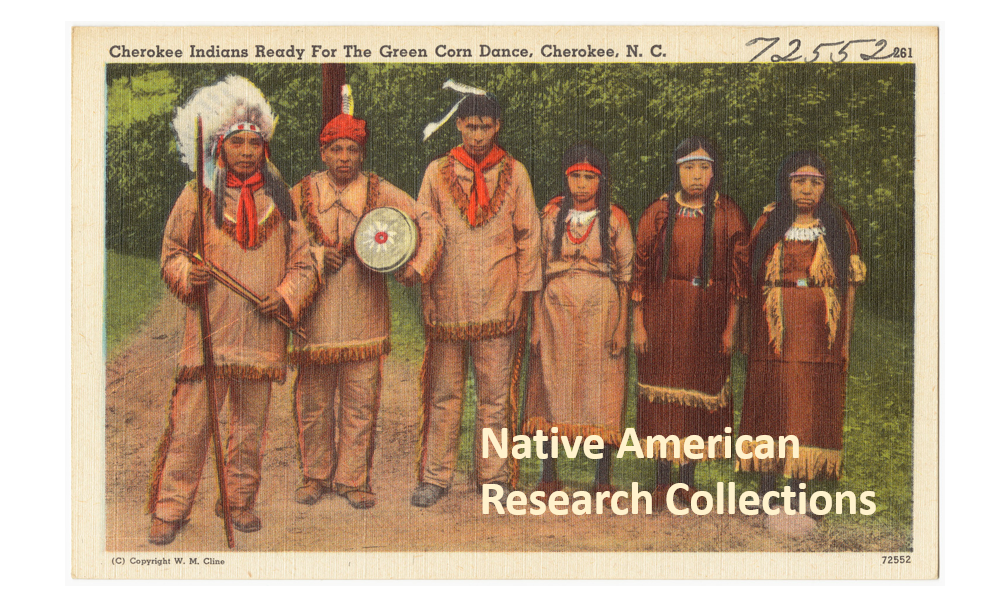
Original image provided by Boston Public Library via Flickr at https://www.flickr.com/photos/24029425@N06/5755511285.
Our Purpose
Our goal is to open the doors to using all types of available genealogical records, and provide you with the skills to explore them with confidence. Our Genealogy Gems team is excited to share with you the opportunity to utilize the free access to Native American records on Fold3.com. While it can be difficult and confusing to know how to navigate these important records, this post will provide you with information to get you started and to feel a little more comfortable jumping in! Now, let’s get started.
Eastern Cherokee Applications Collection for Native American Research
The Eastern Cherokee tribe sued the United States for funds due them under the treaties of 1835, 1836, and 1845. [1] Applicants, or claimants, were asked to prove they were members of the Eastern Cherokee tribe at the time of the treaties, or descended from its members. [To learn more about the lawsuits and allocations, read “Eastern Cherokee Applications of the U.S. Court of Claims, 1906-1909,” in .pdf form provided by the National Archives and Records Administration.]
The courts ruled in favor of the Eastern Cherokees and the Secretary of the Interior was tasked to identify the persons entitled to distribution of funds. The job of compiling a roll of eligible persons was given to Guion Miller.
It is interesting to note that the funds were to be distributed to “all Eastern and Western Cherokee Indians who were alive on May 28, 1906, who could establish the fact that at the time of the treaties, they were members of the Eastern Cherokee tribe or were descendants of such persons, and that they had not been affiliated with any tribe of Indians other than the Eastern Cherokee or the Cherokee Nation.” [Source: page 4, 3rd paragraph of NARA document Eastern Cherokee Applications of the U.S. Court of Claims, 1906-1909.]
The collection at Fold3 titled “Eastern Cherokee Applications” contains these applications submitted to prove eligibility. [Important: Because this act was about money allocation and individuals filling out these applications would have received money if approved, this may raise the question, “Did our ancestor have a reason to lie or exaggerate the truth so that they might be awarded funds?” Further, the Genealogy Standards produced by the Board for Certification of Genealogists (BCG) reminds us: “Whenever possible, genealogists prefer to reason from information provided by consistently reliable participants, eyewitnesses, and reporters with no bias, potential for gain, or other motivation to distort, invent, omit, or otherwise report incorrect information.” [2] In this case, those filling out the Eastern Cherokee Applications did have potential for gain. So, be sure to take any genealogical data, like names, dates, and places, with a grain of salt and find other documentation to back-up the facts.]
The first step in locating whether your ancestor applied is to check the index. If you are not a member of Fold3.com, you will first need to go to www.fold3.com. Click in the center of the homepage where it says, “Free Access to Native American Records.” Next, on the left you will see “Records from Archives.” Go ahead and click that.
From the list now showing on your screen, choose “Eastern Cherokee Applications.” Then click “learn more” at the bottom right of the collection description.

From the new screen, choose “Browse by title.”

Notice, there are two general indexes. The first choice is for surnames between the letters of A and K, and the second general index is for the letters between L and Z. The index is alphabetical by surname.
Scroll through the digital images of the index and find the surname of your targeted ancestor. For example, my ancestor’s last name is Cole.
You will see the state they were currently living in and a number listed to the left of each name. This number is what you will need to find the application of your ancestor. In the example here on the left, Anderson Cole’s number is 31697. Though the step of using this index could be omitted, I wanted you to know how to use it.
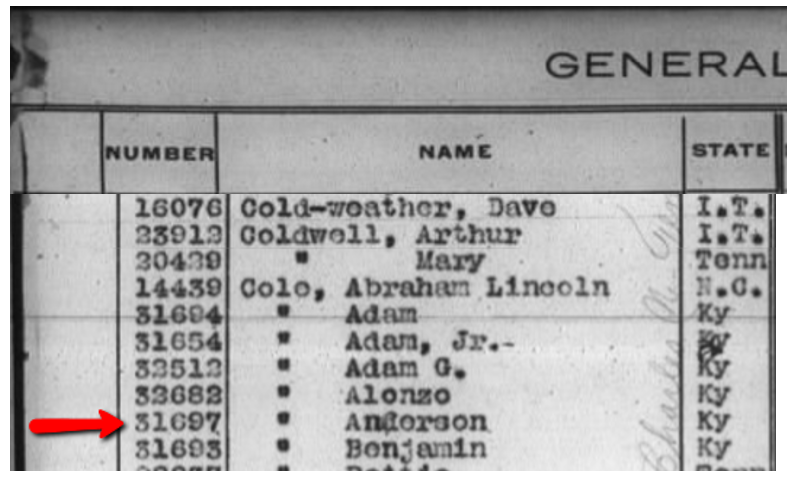
Anderson Cole’s name appears on the General Index of the Eastern Cherokee Applications.
Armed with this number as confirmation, let’s go back to the list of options and this order medication online for pain time, choose Applications.

Applications are broken down by the first letter of the surname, so in my case, I would click on the letter C and then from the new options list, click the appropriate indicator until I reach Anderson Cole.

Anderson’s application is eight pages, however applications vary in size from fewer than eight to several more.
From Fold3.com, you can see each page of the application. Some of the information you may find on the applications include, but is not limited to: name, birth date and location of applicant, names of parents and siblings, name of spouse and marriage date and place, tribe affiliation, Cherokee name, grandparents names, and residences.
The application was sent in to the Commissioner of Indian Affairs and then it was decided whether the applicant was eligible or not.
Lies and Rejection
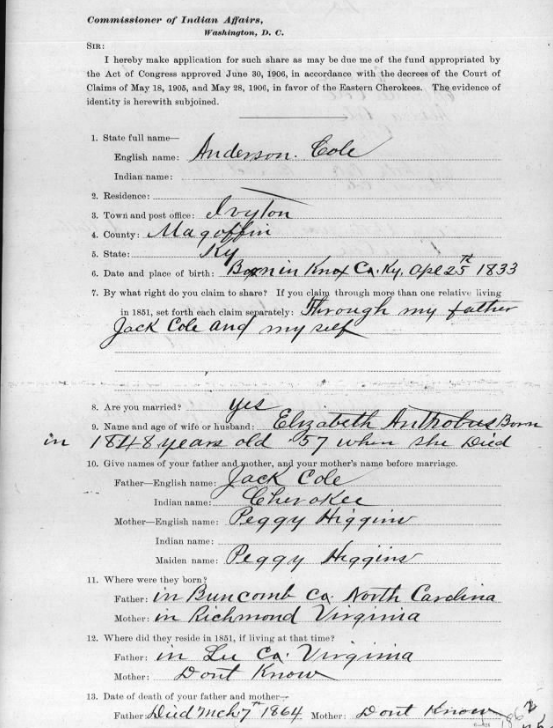
Anderson Cole’s Eastern Cherokee Application was rejected but held genealogical data.
In Anderson Cole’s case, he was rejected. This is found on the very first page of the application. In other words, the commission did not find him able to prove his relationship with known members of the Eastern Cherokee tribe and therefore, he was not given any allotment of money. This rejection neither proves or disproves whether Anderson was of Native American descent. However, it does suggest that something in his lineage was questioned.
Further, when reviewing the information recorded on any genealogy record, we must ask the question, “Did this person have any reason to lie?” When money is on the line, lying is always a possibility. According to further research, it appears Anderson either lied, omitted details, or was seriously mistaken about many names and dates of close family members. Even then, there are some great hints within the pages of his application and I was happy to find it.
Additional Information in the Eastern Cherokee Applications
In addition to an application being filed for our ancestor, if the ancestor had children under the age of 21, they may have also applied in behalf of the child as a Cherokee Minor.
Anderson’s son, W.T. Cole, applied under the same application number as Anderson. I found his application in the last pages of Anderson’s file. This type of record is direct evidence of a parent/child relationship and can be a wonderful substitute when other vital records can not be located. However, direct evidence (which is anything that directly answers a specific question…like ‘who are the parents of W.T. Cole?’) does not have to be true. In this case, just because Anderson says his son is W.T. Cole, doesn’t mean it is absolutely true. We should always find other records or evidence to back up our findings.
How is the Roll of Eastern Cherokees Different from the Eastern Cherokee Applications?
You may have noticed that besides the Eastern Cherokee applications and general index, there is also a record set titled “Roll of Eastern Cherokees.” Another name for this roll is called the Guion Miller Rolls. This is a roll, or list, provided by commissioner Guion Miller of all those who were approved to receive the allocated money. [We will be discussing the Guion Miller Roll Collection from Fold3 in a later blog post. Be sure to sign-up for our free newsletter so you don’t miss it!]
Anderson Cole and his son do not appear on this Roll of Eastern Cherokees. If however, your ancestor does, additional information on this roll could include application number, the names of minor children, ages of all parties, current residence, and a death date.
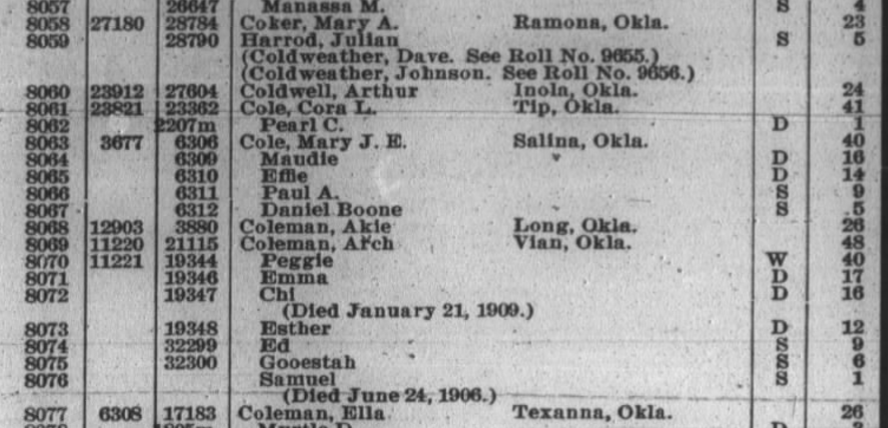
A partial page of the Roll of Eastern Cherokee found online at Fold3.com.
More on Native American Research
Using Native American collections for genealogy research can be challenging. We hope this has helped you to better understand the ins and outs for using the record collections at Fold3. For even more helpful tips, read:
How to Use the Dawes Collections for Native American Research
 Stay tuned as we bring you additional instructions for exploring the Guion Miller Roll and Indian Census Rolls at Fold3.com in the days to come. Sign up for our free Genealogy Gems newsletter for our upcoming posts on this important subject.
Stay tuned as we bring you additional instructions for exploring the Guion Miller Roll and Indian Census Rolls at Fold3.com in the days to come. Sign up for our free Genealogy Gems newsletter for our upcoming posts on this important subject.
Article References:
[1] “The U.S. Eastern Cherokee or Guion Miller Roll,” article online, FamilySearch Wiki (https://familysearch.org/wiki/en/The_U.S._Eastern_Cherokee_or_Guion_Miller_Roll : accessed 1 Nov 2016).
[2] Genealogy Standards, 50th anniversary edition, published by Board for Certification of Genealogists, 2014, standard 39, page 24.
Disclosure: This article contains affiliate links and Genealogy Gems will be compensated if you make a purchase after clicking on these links (at no additional cost to you). Thank you for supporting Genealogy Gems!
by Lisa Cooke | Oct 9, 2013 | 01 What's New, Ancestry, Australian, British, Military, Records & databases
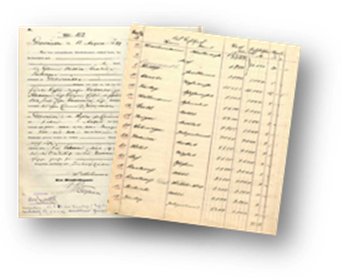
Vital records registrations, Pomerania, Germany
Records from Australia, England, the United States and Germany are among new content at Ancestry.com. Check out these collection highlights, now available online (access may depend on user subscription status).
- Military Registers, 1862-197, which include registers of U.S. military personnel stationed domestically (Navy, Marines, Reserve officers);
- Cherokee Baker Roll and Records, 1924-1929;
- Births, marriages and deaths (images only) for Grevesmühlen, Mecklenburg-Western Pomerania, Germany;
- Tax lists for Cuyahoga County (Cleveland), Ohio, USA, 1819-1869;
- Baptisms, marriages and burials for Birmingham, England, 1538-1812;
- Rate books for Perth, Western Australia
- U.S. Virgin Islands, applications for travel identification cards, 1918.
by Lisa Cooke | Jun 28, 2013 | 01 What's New, Research Skills
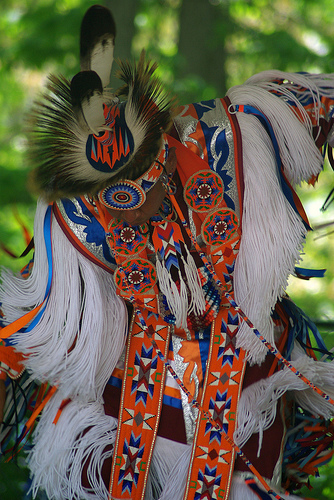
Many North American families have a tradition that someone in their family tree was a Native American. In fact, I have sometimes heard people say that they originally got interested in genealogy because they wanted to learn whether they really did have a Native American connection.
However, it’s not always easy to track down and verify American Indian ancestry. That’s why I was pleased to get a tip from podcast listener Kate Vaughan. She says that a Choctaw friend of hers recommends Guide to Tracing Your American Indian Ancestry by the Bureau of Indian Affairs, an e-book to which you can click directly.
Once you’ve done the research and confirmed your native roots, you can actually contact tribal leaders and see if you’re eligible to enroll in the tribe (each tribe has its own requirements). You can also apply for a certificate degree of Indian Blood from the Bureau of Indian Affairs that shows your blood quantum and tribal affiliation.





















